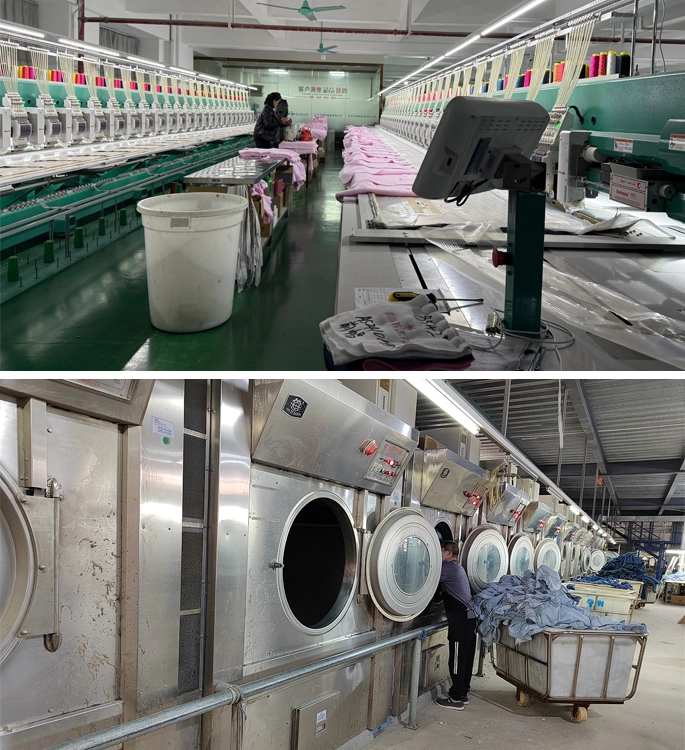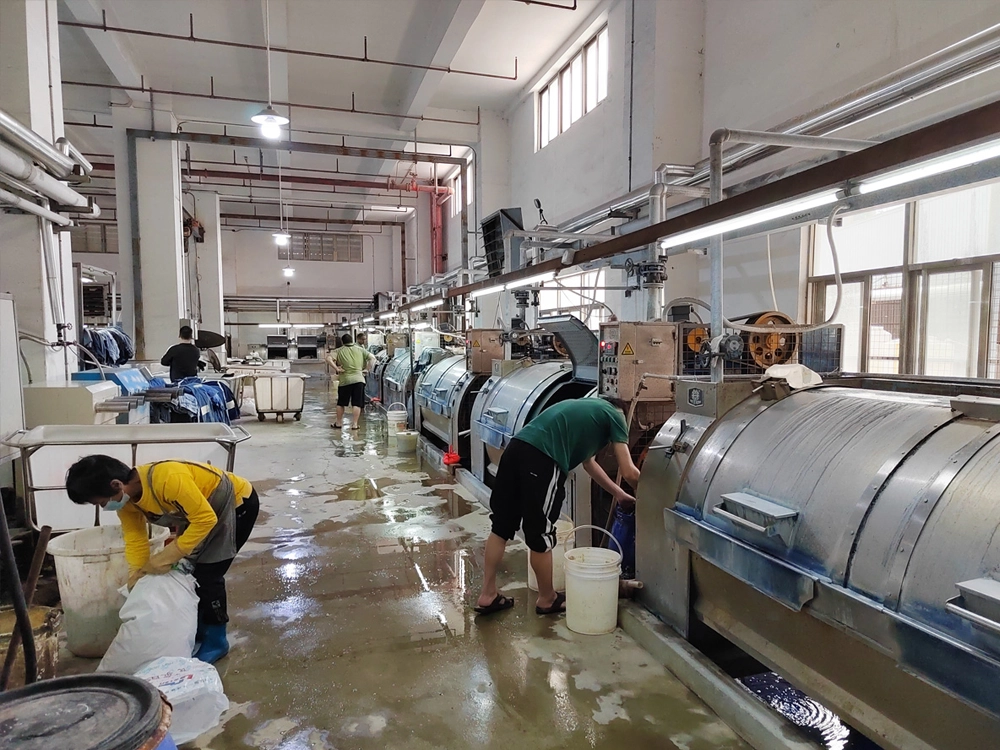Don't miss our holiday offer - up to 50% OFF!

How to shrink denim jeans
How to Shrink Denim Jeans: A Comprehensive Guide
Denim jeans are a wardrobe staple, but sometimes the perfect pair is just a little bit too loose. Whether it’s a post-wash relaxation, a deliberate purchase in a size up, or a vintage find that needs tailoring, knowing how to shrink denim jeans is a valuable skill. While denim, a durable cotton twill fabric, is naturally prone to shrinkage, achieving the desired result requires a strategic approach. This guide will walk you through the most effective methods, the science behind them, and real-life case studies to illustrate the process.

Understanding the Science of Shrinkage
Before diving in, it’s crucial to understand what you’re trying to achieve. The primary mechanism for shrinking cotton denim is the application of heat and agitation, which causes the cotton fibers to contract. When denim is manufactured, the yarns are under tension. Heat and moisture relax these fibers, allowing them to return to their natural, shorter state. This is known as “progressive shrinkage.” It’s also important to note that most modern jeans are “pre-shrunk” or “sanforized,” meaning they have undergone a controlled shrinking process at the factory, limiting their potential for further shrinkage. However, “non-sanforized” or “shrink-to-fit” denim (like classic Levi’s 501s) is designed to shrink significantly.

Method 1: The Hot Wash and High-Heat Dry (The Most Aggressive Approach)
This is the most effective method for achieving maximum shrinkage, both in length and in width.
Steps:
- Set Your Washer: Turn the washing machine to the hottest water setting and the longest cycle. Adding a regular detergent is fine.
- Wash Alone: Place the jeans in the washer by themselves to avoid dye transfer and to ensure they get maximum agitation.
- High-Heat Dry: Immediately transfer the jeans to the dryer. Set it to the highest heat setting and run it for a full cycle. You can even run them for a second cycle if they are still damp to ensure all possible shrinkage is achieved.
What to Expect: This method can result in 3-5% overall shrinkage. For a 32-inch waist and 34-inch inseam, that could mean a reduction of about 1 inch in the waist and 1-2 inches in length. Be warned: this process is harsh and can cause fading and stress on the fabric over time.

Method 2: The Boiling Water Method (Targeted and Controlled)
For those who want to avoid the dryer’s harsh tumbling or need more localized shrinkage, the stovetop method offers precision.
Steps:
- Boil a Large Pot: Fill a large pot with water and bring it to a rolling boil.
- Submerge the Jeans: Using tongs, carefully submerge the jeans (or just the part you want to shrink, like the legs) into the boiling water.
- Simmer: Reduce the heat to a simmer and let the jeans sit for 20-30 minutes.
- Remove and Dry: Carefully remove the jeans (they will be extremely hot) and allow them to cool slightly before wringing out excess water. Then, toss them in the dryer on high heat to finish the process and set the shrinkage.
What to Expect: This method provides significant, controlled shrinkage, particularly in the areas submerged. It’s excellent for tightening the thigh and knee areas.

Method 3: The Hot Bath Soak (The Gentle Giant)
This method is ideal for high-quality raw denim or jeans where you want to minimize color loss and fabric stress while still achieving a snugger fit.
Steps:
- Fill a Tub: Fill a bathtub or a very large basin with the hottest water from your tap.
- Soak: Submerge the jeans completely and let them soak for 45-60 minutes. Agitate them every 15 minutes.
- Air Dry or Tumble Dry: After soaking, wring them out thoroughly. For maximum shrinkage, use the dryer. For a more relaxed fit with minimal shrinkage, hang them to air dry. The dryer will, of course, produce more dramatic results.
What to Expect: This will result in a subtle shrink, typically 1-3%. It’s a great way to “reset” the fit of a stretched-out pair without drastic changes.

Important Considerations and Limitations
- Waistband Shrinkage is Limited: The waistband often contains non-cotton materials like elastic or polyester thread that resist shrinkage. While the denim around it may shrink, the waistband itself often remains largely unchanged.
- Pre-Shrunk Denim: Don’t expect miracles from sanforized denim. The shrinkage will be minimal, often just enough to tighten a slightly baggy fit.
- Stretch Denim Warning: Jeans with spandex or elastane are designed to retain their shape. Applying high heat can actually damage the elastic fibers, causing them to lose their stretchiness permanently, resulting in a baggy, misshapen pair of jeans.
Real-Life Case Studies
To see these methods in action, let’s look at some real-world scenarios.
Case Study 1: The Vintage Levi’s 501 Find
- Scenario: Sarah found a pristine pair of vintage, non-sanforized Levi’s 501 jeans at a thrift store. They were two sizes too large, a common strategy for buying “shrink-to-fit” denim.
- Method Used: She opted for the Hot Bath Soak (Method 3) to have more control over the process, as vintage denim can be delicate. She soaked them in a bathtub of hot water for an hour, agitating them periodically.
- Result: After a full cycle in the dryer, the jeans shrank dramatically. The waist reduced by nearly two inches, and the inseam shortened by three inches, creating a perfect, custom-fit pair that molded to her body. The hot soak successfully triggered the intended shrinkage of the raw denim without excessive fading.
Case Study 2: The Stretched-Out Everyday Jeans
- Scenario: Mark had a favorite pair of pre-washed, sanforized jeans that had stretched out and become baggy in the seat and knees after months of wear between washes.
- Method Used: He needed a reliable, straightforward solution and chose the Hot Wash and High-Heat Dry (Method 1). He washed them on a hot cycle with a small amount of detergent and dried them on high heat until completely dry.
- Result: The jeans shrunk back to, and even slightly beyond, their original store-bought dimensions. The fit in the seat and thighs tightened up perfectly, restoring the “like-new” silhouette. He noted some minor fading, but for a well-worn pair, it was an acceptable trade-off.
Case Study 3: The Flood-Length Problem
- Scenario: Ana bought a pair of jeans that were perfect in the waist but far too long, creating an excessive bunching effect around her ankles.
- Method Used: Her goal was targeted length shrinkage. She employed the Boiling Water Method (Method 2). She boiled a large pot of water and, holding the jeans by the waist, submerged only the legs from the knee down for 25 minutes.
- Result: This targeted approach successfully shrank the leg length by about an inch and a half without significantly altering the fit through the hips and waist. After a quick tumble dry, the jeans were the perfect full-length style she wanted.
Final Verdict
Shrinking denim jeans is a practical way to achieve a better fit. Your choice of method should depend on the type of denim you have and how much shrinkage you desire. Always err on the side of caution—you can always repeat a process for more shrinkage, but you can’t un-shrink a pair of jeans that has become too small. With this guide, you’re now equipped to tailor your denim from the comfort of your own laundry room.
